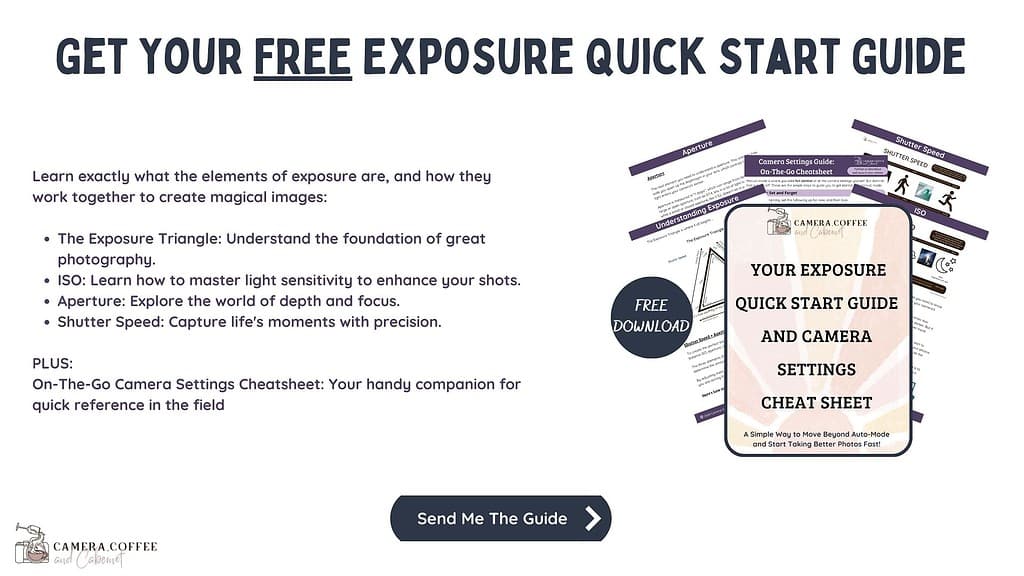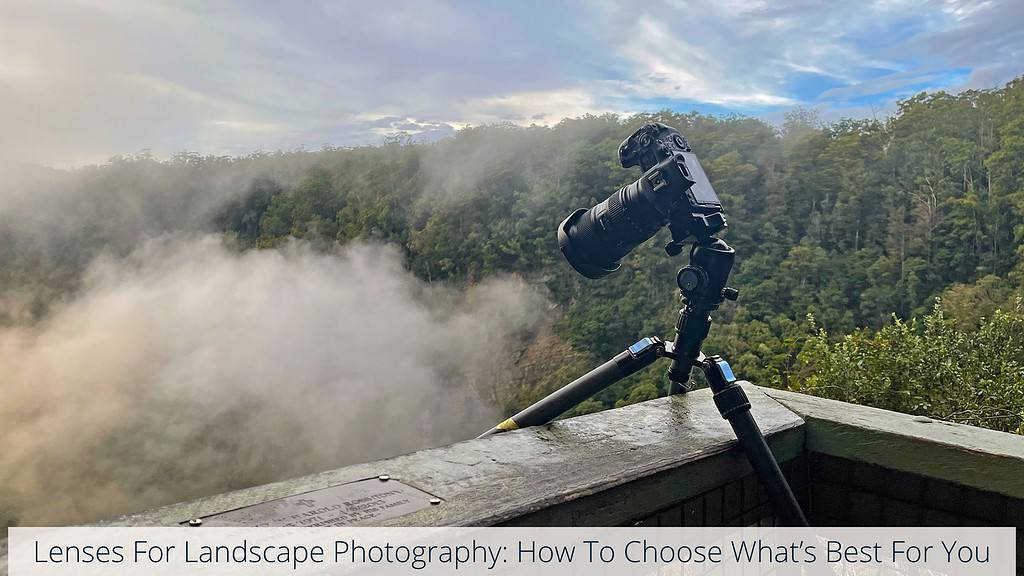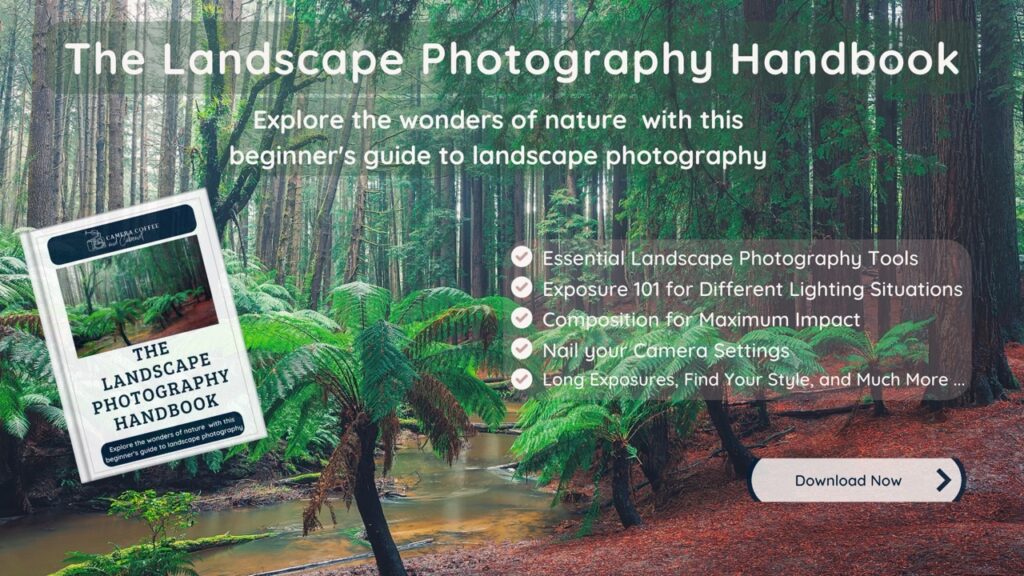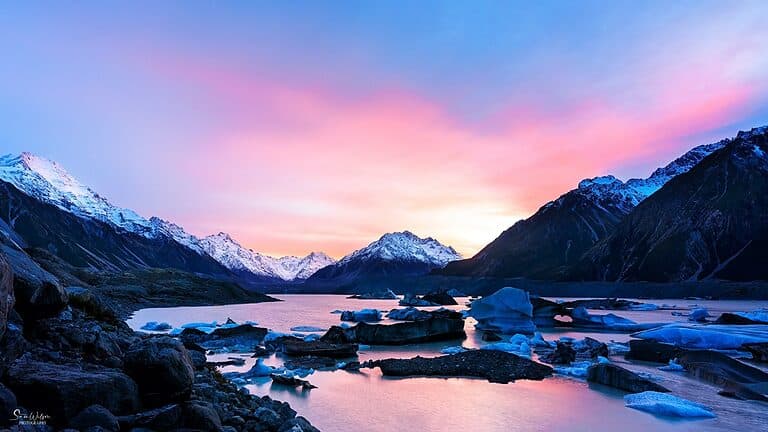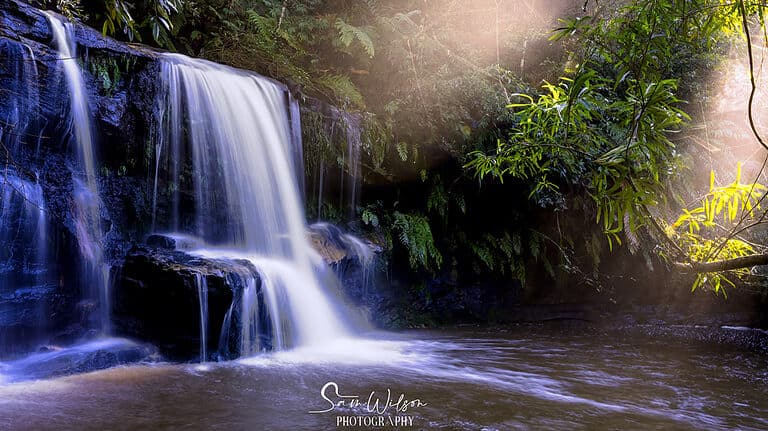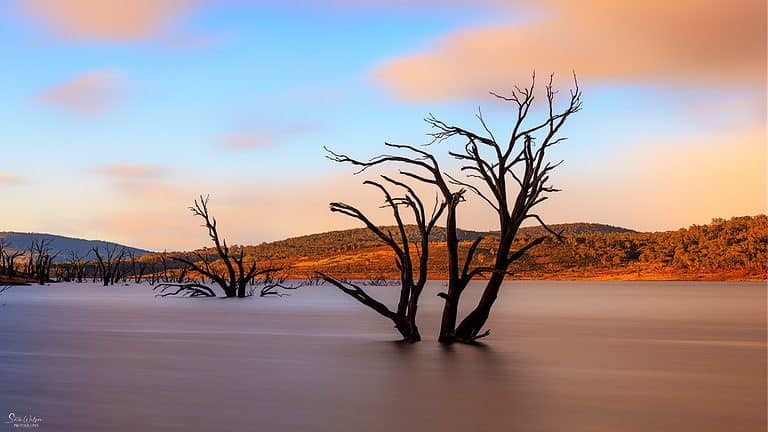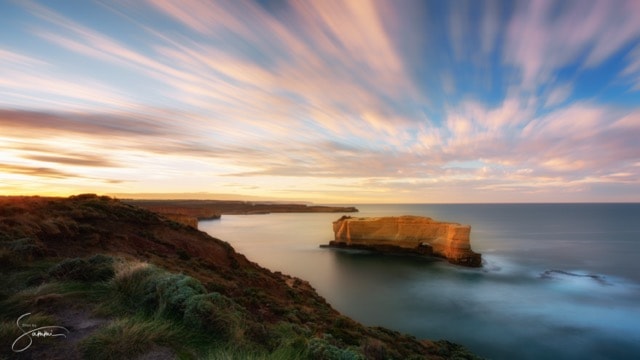Skill and Vision in Landscape Photography: More Important Than Gear
This post may contain affiliate links, which means I’ll receive a commission if you purchase through my link, at no extra cost to you. Please read the full disclosure here.
Starting in landscape photography can seem overwhelming, especially when you’re bombarded with the idea that you need expensive gear.
Everywhere you look, there’s a shiny new camera or lens screaming for your attention – and your wallet.
But let’s be honest, wouldn’t you rather save that money for something truly essential, like, say, a good coffee machine that makes the perfect brew?
The myth that you need top-of-the-line gear to be a great landscape photographer is as persistent as a caffeine craving on a Monday morning.
In this article, we’ll delve into why skill and vision in landscape photography are far more important than the equipment you use.
We’ll explore why these are the real cornerstones in landscape photography, capable of turning even a ‘meh’ scene into wall-art material.
We’ll also dive into how to make the most of what you’ve already got, whether that’s a DSLR, a mirrorless camera, or even just your trusty smartphone.
Because let’s face it, the more you save on gear, the more you can spend on what really counts, like that dream photography trip to Iceland.
So, if you’ve been holding back from capturing the world’s beauty because you think your gear isn’t up to snuff, this article is your wake-up call. And not the kind that requires a double espresso to get through.
Let’s focus on what truly matters and start turning your vision into stunning photographs.
The Overrated Hype of Gear
It’s easy to fall into the trap of thinking that splurging on the latest camera will instantly elevate your landscape photography.
But let’s pause for a moment.
Relying too heavily on high-end gear can actually create a whole new set of challenges you didn’t even see coming.
Understanding Your Equipment is Key
Imagine buying a top-of-the-line camera with all the bells and whistles, only to find yourself fumbling through a labyrinth of settings and options.
It’s like owning a Ferrari but not knowing how to drive in manual.
The point is, a fancy camera is just a paperweight if you don’t invest the time to understand its capabilities and limitations.
So before you even think about upgrading, make sure you’ve mastered what you’ve already got.
The Trap of Gear Acquisition Syndrome (GAS)
Ah, the allure of new gear.
It’s like the photography world’s version of retail therapy.
But beware of “gear acquisition syndrome,” or as we like to call it, GAS. It’s a costly and distracting cycle of constantly chasing the latest equipment.
Feeling a bit “gassy”?
That might be a sign to step back and focus on improving your skills instead.
Confession Time: This took me way longer to get than it should have! I’m sharing this now so that hopefully you’ll catch on quicker than I did!
When Gear Becomes a Hindrance
You might think that having a variety of lenses and accessories gives you an edge, but sometimes it can do just the opposite.
Being weighed down by too much gear can make you less agile in the field, causing you to miss those fleeting moments of perfect light or composition.
Photographing waterfalls and mountains in particular can require quite a bit of effort to get to, so the less gear you are carrying the better. Save some of that extra weight for water and snacks!
In landscape photography, sometimes less is more. So before you pack for your next shoot, consider what you really need and what might just be dead weight.
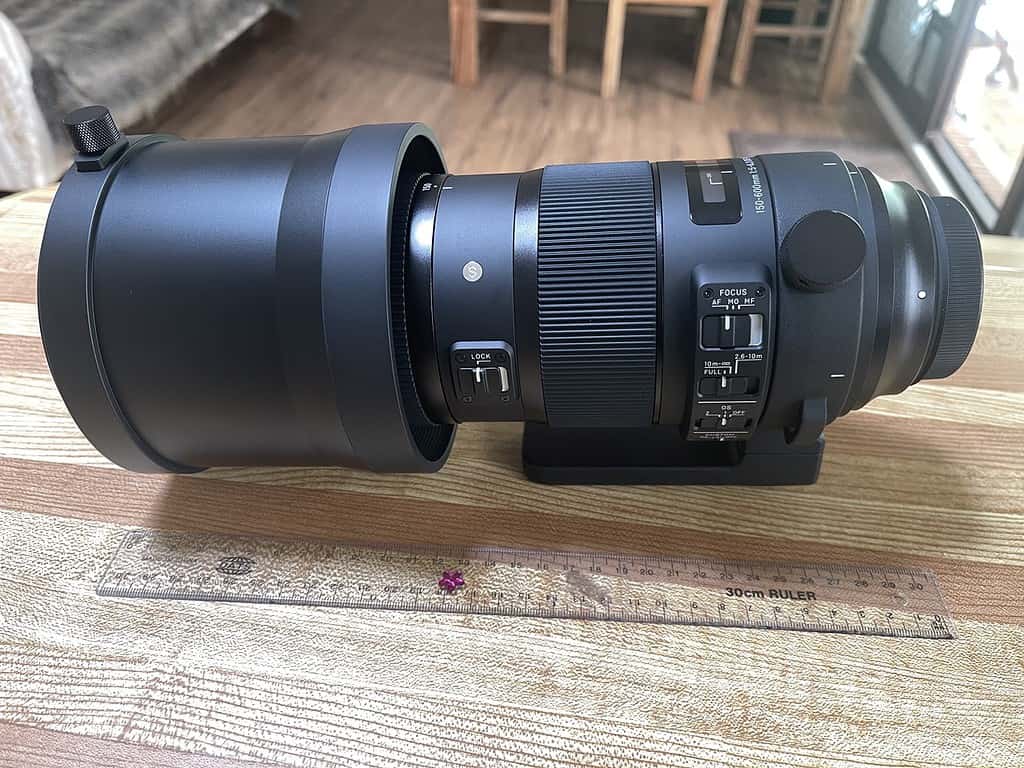
A Minimalist Kit for Landscape Photography
If you’re looking to streamline your gear without compromising on quality, here’s a suggested minimalist kit that covers the essentials:
- Camera and Primary Lens: One reliable DSLR or mirrorless camera with a versatile lens like a 24-70mm f/2.8. If you’re using a smartphone or a camera without interchangeable lenses, make sure it has a good range of focal lengths and aperture settings.
- Tripod: A sturdy, yet lightweight tripod for long-exposure shots and stable compositions.
- Memory Cards and Storage: At least two high-capacity memory cards for cameras, or sufficient storage space on your smartphone.
- Spare Batteries or Power Bank: One or two extra batteries for cameras, or a reliable power bank for smartphones.
- Neutral Density Filter: Useful for controlling exposure in bright conditions or for creative effects.
- Cleaning Kit: A simple lens cleaning kit to keep your gear in top condition, applicable to both cameras and smartphones.
By focusing on these essentials, you’ll be more agile and ready to capture those magical moments when they happen.
Now I’m not saying that having more lenses and filters aren’t essential to have in your kit, they just aren’t essential for every shoot you go on.
I most certainly take everything I have when I go on a dedicated photography workshop or tour, but for a fun day out ‘snapping’ it can be really liberating to just have your camera and one lens, or even just your phone.
Making the Most of What You’ve Got
Think you need the latest camera to capture awe-inspiring landscapes?
Think again. Some of the most captivating shots come from photographers who know how to maximise the capabilities of their existing gear.
Let’s explore how you can do the same.
Using Your Existing Camera Effectively
Whether you’re using a high-end DSLR, a compact mirrorless, or a smartphone, the key to exceptional photography is understanding your device.
I agree that reading your camera’s manual is not a lot of fun, but it really is worth taking the time to learn where the things you need are and where to begin looking in the menu.
Youtube can also be your friend here and it’s what I used when setting up my latest camera.
Don’t hesitate to experiment; the more you explore, the better equipped you’ll be to capture those perfect landscape moments.
Investing in courses and workshops really can be more worthwhile in the long run than racing out and buying the latest gadget. No gadget will help you if you don’t know how to use the functions of the camera you already have.
The Underestimated Power of Smartphone Photography
Don’t overlook the capabilities of a good smartphone camera.
With technological advances, many smartphones now offer features that were once exclusive to high-end cameras, like manual settings and RAW format. There are also numerous apps to help you fine-tune your shots.
So if you find yourself without your primary camera but in front of a stunning view, don’t hesitate to use your smartphone.
Remember, the best camera is the one you have with you.
For a more in-depth look at the apps that can elevate your landscape photography, check out my comprehensive guide on 15 Of The Best Apps For Landscape Photographers.
I recently went on a photo-walk in the city (Sydney) and the challenge was to only use our phones and shoot in black and white, neither of which I’m used to doing. BUT it was so much fun and I’ve booked in for another one!
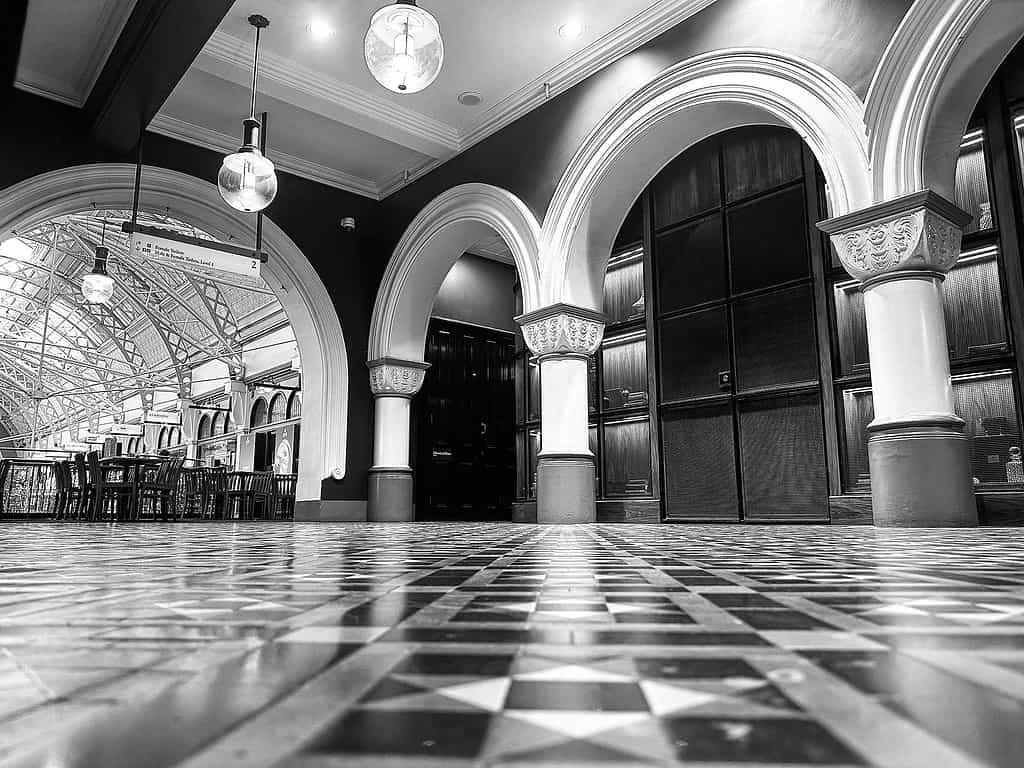
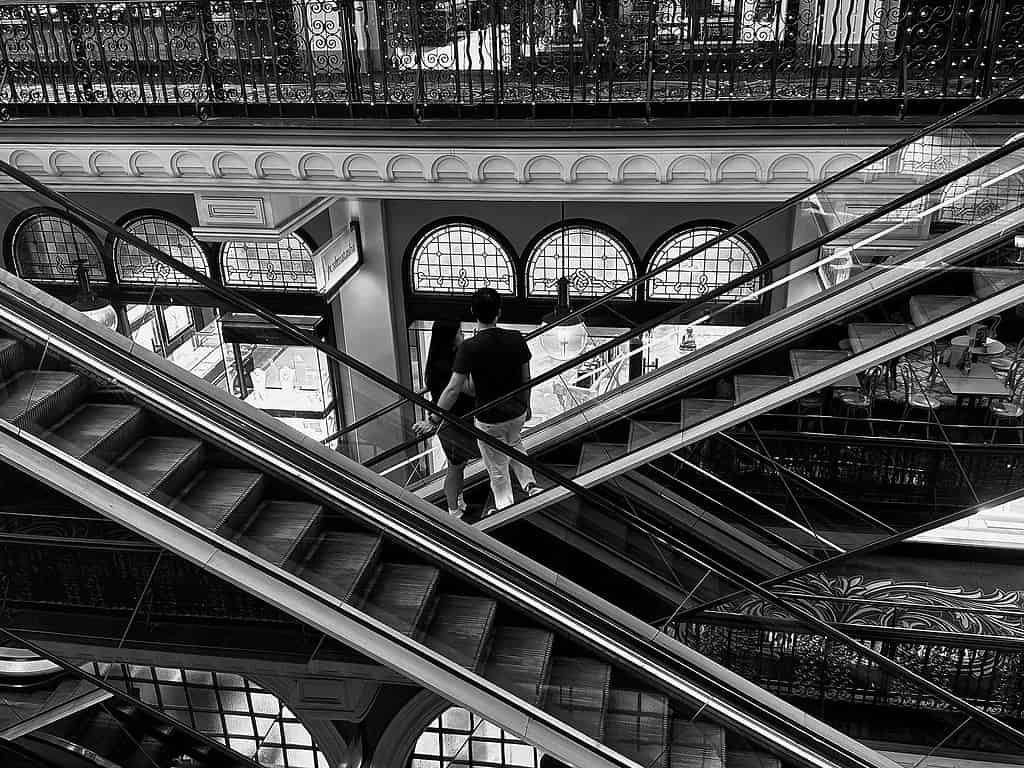
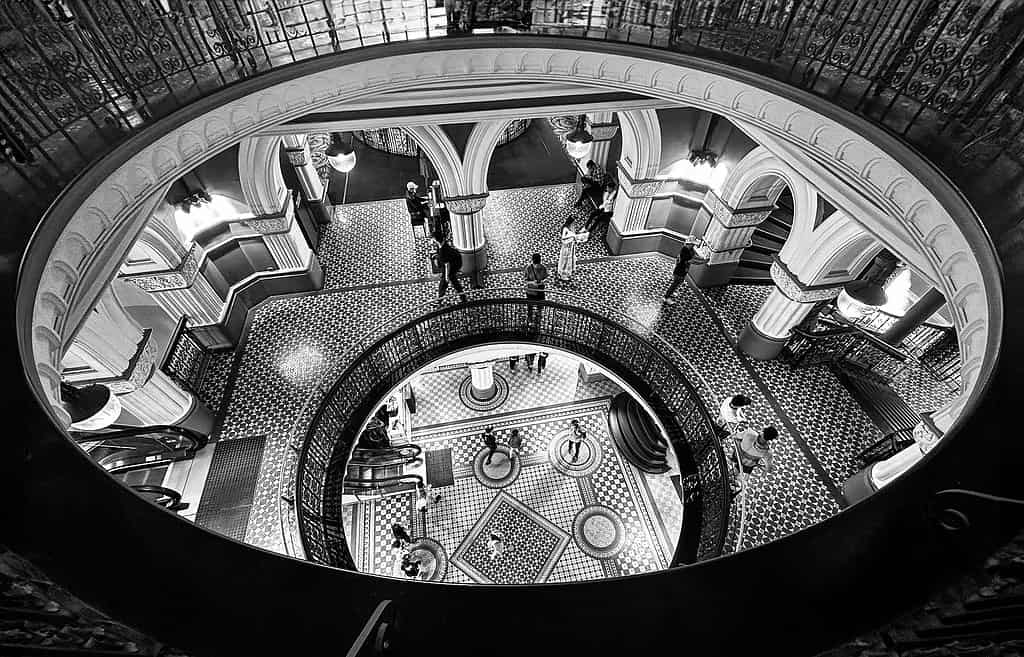
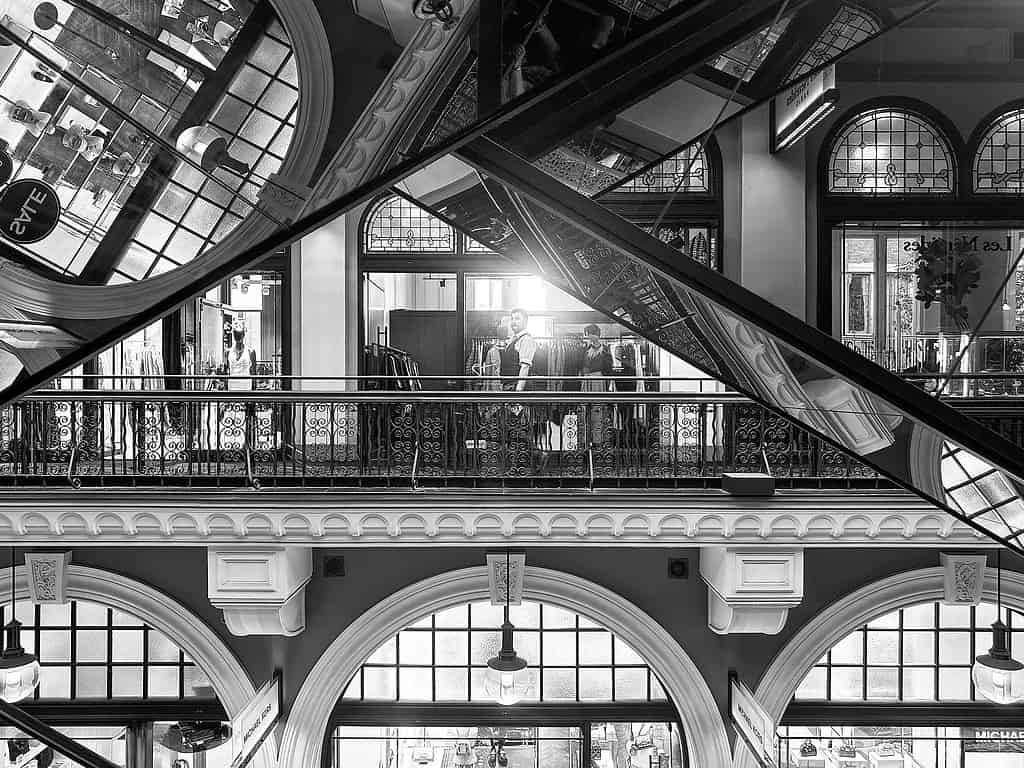
Fun in the city with my phone in black and white – so definitely not about the gear here, but I’m more than happy with the results!
This doesn’t mean I am ditching my mirrorless system at all, but it does give another option.
The Real Game-Changers: Skill and Technique
Before you even consider splurging on new gear, it’s crucial to focus on the elements that truly make a difference in your photography: skill and technique. Understanding the basics of exposure is far more important than the number of megapixels your camera has.
In this section, we’ll delve into how fundamental skills can elevate your landscape photography, regardless of the equipment you’re using.
The Exposure Triangle: A Balancing Act
Understanding the exposure triangle – ISO, aperture, and shutter speed—is essential for achieving the right exposure in your photos.
These three elements interact to control the amount of light that hits your camera sensor, and mastering this balance gives you greater creative control.
For a more detailed explanation, check out my article on understanding exposure.
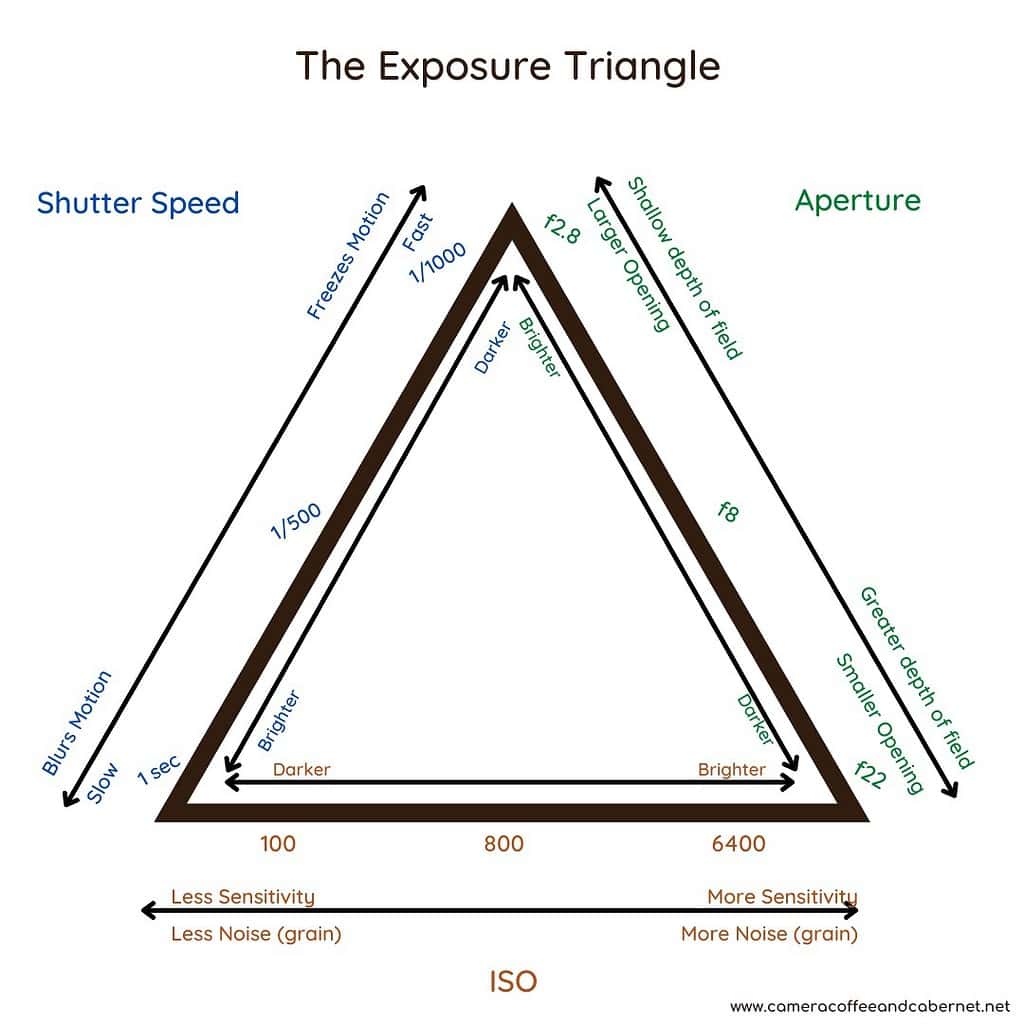
Composition: The Key to Captivating Photos
The rule of thirds, leading lines, framing – these aren’t just buzzwords; they’re the building blocks of great photography.
Mastering composition allows you to guide the viewer’s eye and create a more engaging image.
Whether you’re capturing sweeping vistas or intimate details, a well-composed shot can make all the difference.
Mastering Light to Elevate Your Shots
Understanding light is like learning a new language; it allows you to communicate more effectively with your audience.
From the golden hour to the blue hour, knowing when and how to use natural light can dramatically improve your photos.
Experiment with different lighting conditions to discover what best complements your subject.
The argument as to whether light or composition is the most important element in a great photo
has been going on forever. This is a great article and video to give you some extra food for thought:
Light vs Composition: What’s More Important in Landscape Photography?
Vision: Your Unique Stamp in Landscape Photography
What truly sets your photos apart isn’t the gear you use, but your unique vision and emotional connection to the landscape.
In this section, we’ll discuss developing your own style and vision in landscape photography.
Developing Your Own Style and Vision
Your style is your signature, the unique way you see and interpret the world around you.
It’s shaped by your experiences, your influences, and even your mood on the day of the shoot.
To develop your style, start by studying the work of photographers you admire.
Analyse what draws you to their images and consider how you can incorporate similar elements into your own work.
If you’re stressing about finding your unique style, don’t worry; it’s a journey that takes time. For more insights, check out my article on Finding Your Photography Style.
How Emotion and Storytelling Come into Play
Photography isn’t just about capturing a scene; it’s about capturing a feeling.
The most memorable photos often tell a story or evoke an emotional response.
Whether it’s the tranquillity of a secluded beach at dawn or the drama of a storm rolling in over a mountain range, your emotional connection to the scene can add layers of depth to your images.
This is a great video on the power of storytelling in photography by Adorama that I found very inspiring:
If You Must Spend, Spend Smart
So you’ve honed your skills and you’re considering an investment in new gear.
Before you part ways with your hard-earned money, let’s ensure it’s for equipment that genuinely enhances your photography.
Lens Selection: Where to Put Your Money
If you’re contemplating an upgrade, consider starting with the lens rather than the camera body.
A high-quality lens can significantly improve your image quality and open up new creative avenues.
Whether it’s a versatile 24-70mm f/2.8 or a specialised wide-angle lens for landscapes, a good lens is often a wise investment.
The Value of a Reliable Tripod
A sturdy tripod can make a world of difference, particularly for long-exposure shots or capturing landscapes in challenging conditions.
While it might be tempting to opt for a budget-friendly choice, a well-crafted tripod is an investment that will serve you well over time.
This is one thing I can’t stress enough. I bought my Sirui Tripod back in 2017 and it’s still going strong.
Considering Second-Hand Gear
New isn’t always better. The pre-owned market offers a range of quality options that can meet your needs without stretching your budget.
Just be sure to do your due diligence: check the condition, inquire about its history, and if possible, test it before finalising your purchase.
If you’re not confident or comfortable using platforms such as Facebook Marketplace, then many camera stores offer pre-owned gear which can be a safer option.
Investing in Courses and Workshops: Knowledge is Power
While gear can enhance your technical capabilities, nothing replaces the value of knowledge and hands-on experience.
Courses and workshops offer targeted learning and direct feedback from professionals, helping you to refine your skills and vision.
Whether it’s mastering the basics or diving into advanced techniques, investing in your education can be one of the most rewarding expenditures you make in your photography journey.
And a major side-benefit of attending workshops and tours are the other photographers you’ll meet. I’ve made lifelong friends from the tours I’ve been on – it truly is a wonderful community.
Of course the other option here is to look for free videos and articles (like this one) to help you along your journey.
These are also great options and I have lost many, many hours doing this. Yes, you will learn but please remember that you can’t trust everyone. There is a lot of misinformation, ore even more importantly, outdated info out there, so be careful.
Conclusion
Starting in landscape photography can often feel like stepping into a tech store – overwhelming and full of expensive temptations.
But as we’ve explored, the real magic doesn’t come from the gear; it comes from you. Your skill, your technique, and most importantly, your vision are what truly make your photos resonate with people.
Investing in yourself – through practice, education, and meaningful experiences – will yield far greater returns than any piece of equipment.
So instead of getting caught up in the latest gear, turn your focus to the beautiful landscapes that drew you to this art form in the first place.
They’re the real stars of the show, and they’re waiting for you to capture their essence.
I truly hope you’ve enjoyed this post.
Let me know in the comments below.
That’s it for now – Keep clicking and stay caffeinated
Like this post? PIN it so you can save it for later
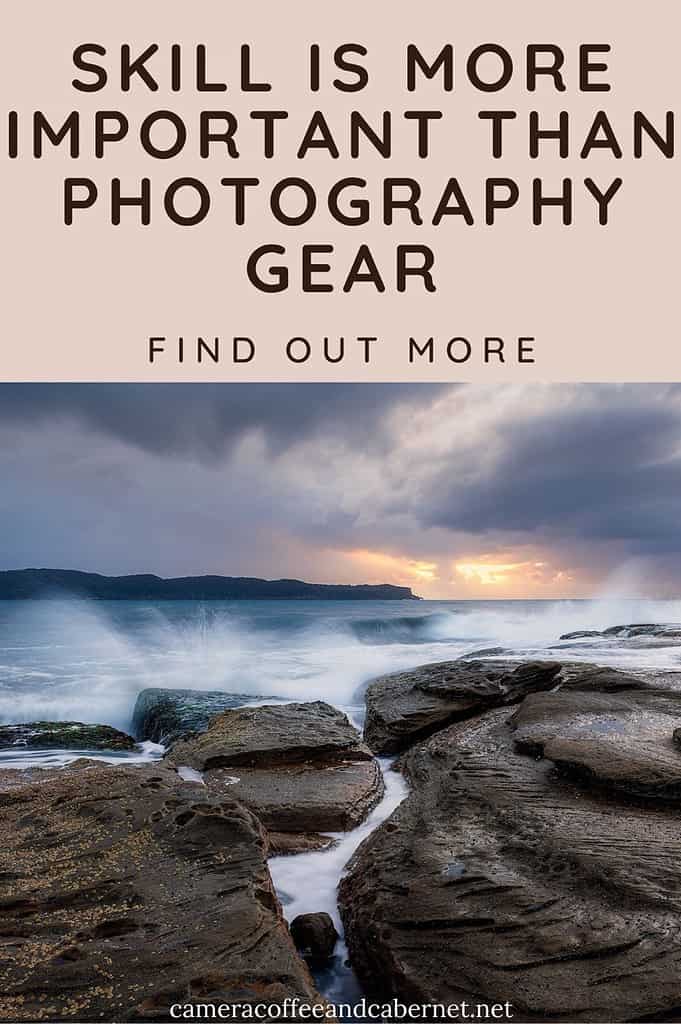
Other Helpful Articles:
- Landscape Photography on a Budget
- Landscape Photography Composition: The Power of Leading Lines
- Landscape Photography Composition: How to Use the Rule of Thirds
- Frame Within A Frame: Easy Ways To Improve Your Composition
- Finding Your Photography Style
- Best Landscape Photography Youtube Channels
- Best Apps for Planning and Scouting Landscape Photography Locations
- Importance of Clouds in Landscape Photography
- Reasons to do Photography Tours
- Choosing a Photography Tour
Don’t miss a post – sign up Here if you haven’t already
Note – Unless otherwise stated, all photos are mine and remain my copyright images – Sam Wilson Photography.
Are you a beginner landscape photographer looking to improve your skills and capture stunning photos of nature?
Our ebook, ‘The Landscape Photography Handbook – Exploring the Wonders of Nature,’ is the perfect guide for you.
With 90 pages of expert advice and practical tips, you’ll learn everything you need to know to capture breathtaking landscapes like a pro.
From essential gear and camera settings to composition techniques and planning your shoot, this comprehensive guide covers it all.
Plus, you’ll discover how to develop your own style, build your confidence as a photographer, and use editing tools to enhance your images.
Get your copy today and start exploring the wonders of nature with your camera!




